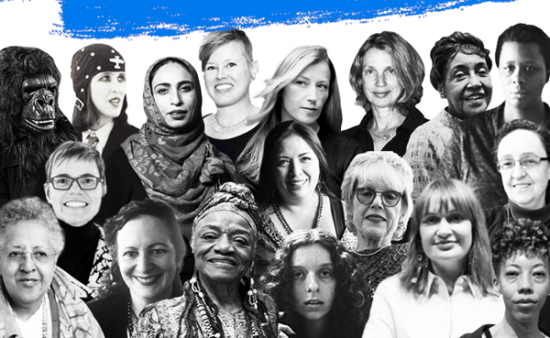CulBeat Express
2020.03.06 13:32
김수자씨 등 세상을 변화시킨 여성 작가들@국립여성미술관(NMWA, DC)
조회 수 1109 댓글 0

In 2020, the #5WomenArtists campaign recognizes how women are using art to make change and drive awareness about globally relevant issues. Artists—of course—address many different themes in their work, but we’ve selected several artists and themes that we’re highlighting across our platforms for the campaign.
Who are your favorite women artists using their art to change the world? Tell us online by using #5WomenArtists and tagging us @WomenInTheArts.
GENDER EQUITY:
- The Guerrilla Girls are an anonymous collective of artist-activists promoting gender and racial equality. To maintain their anonymity, group members wear gorilla masks in public and adopt the names of historic women artists, such as Käthe Kollwitz and Frida Kahlo, as pseudonyms.
- Barbara Kruger uses found images and incorporates provocative slogans in bold letters, drawing attention to how visual culture shapes our perception of gender, and how it reinforces a binary gender system that objectifies women.
- Mónica Mayer transforms the clothesline, a traditionally feminine object, into a tool designed to engage the community and facilitate a dialogue around women’s experiences with violence. In fall 2017, she brought her site-specific installation to NMWA.
- May Stevens played an active role in the Feminist Art Movement of the 1970s and 1980s. Many of her paintings comment on women’s historical, political, and social conditions as she believed that art must be used for social commentary, not just personal expression.
CLIMATE CHANGE:
- Judy Chicago continues to be an influential feminist artist, author, and educator into her eighties. Her latest body of work, The End: A Meditation on Death and Extinction, offers a bold reflection on mortality and the destruction of entire species. It was on view at NMWA in the fall of 2019.
- Chakaia Booker fuses ecological concerns with explorations of racial and economic difference, globalization, and gender by recycling discarded tires into complex assemblages.
- Frida Baranek is one of a generation of sculptors using discarded materials to comment on the health of Brazil’s environment, which has experienced immense changes related to rapid urbanization and industrialization.
RACIAL JUSTICE:
- Sonya Clark interweaves craft, history, and race to create mixed-media works that celebrate blackness and address racial tensions and stereotypes.
- Jaune Quick–to–See Smith bridges Native American art forms and modernist styles, confronting subjects such as the destruction of the environment, governmental oppression of native cultures, and the pervasive myths of Euro-American cultural hegemony.
- Faith Ringgold is well known for originating the African American story quilt revival in the late 1970s as well as for her bold, provocative paintings during the 1960s, directly responding to the Civil Rights and feminist movements.
IMMIGRANT RIGHTS:
- Betsabeé Romero assembles carved and painted tires into totemic structures that speak to themes of human migration and the natural environment. The tires symbolize humankind’s profound connection to cultural traditions, as well as a yearning to keep families safe and thriving.
- Jami Porter Lara creates clay sculptures resembling plastic bottles. The artist was inspired by finding both ancient pottery shards and recently discarded plastic bottles along the U.S.–Mexico border, which led her to reconsider the bottle as a “contemporary artifact.”
- Kimsooja is known for installations of cloth bundles created from found objects and traditional Korean fabrics. The artist became attuned to issues of migration and displacement early in life and her work offers nuanced perspectives on the relationships between nature and culture, as well as between the artist and the larger world.
LGBTQ+ RIGHTS:
- Harmony Hammond became well-known in the 1970s and 1980s for her fabric-wrapped sculptures that expand conventional ideas about women’s handwork. Although abstract, her sculptures cannily reflect a meditation on her lesbian identity as well as her political consciousness.
- Nan Goldin creates uncomfortably personal photographs that shatter traditional notions of fine art photography. Her work often explores the LGBTQ experience, romantic intimacy, the HIV/AIDS crisis, and the opioid epidemic.
- Mickalene Thomas creates paintings and photographs of African American women that subvert concepts of female identity and beauty. Inspired by art history as well as popular culture, Thomas’s works allude to sources ranging from 19th-century French painting to 1970s Blaxploitation films.






